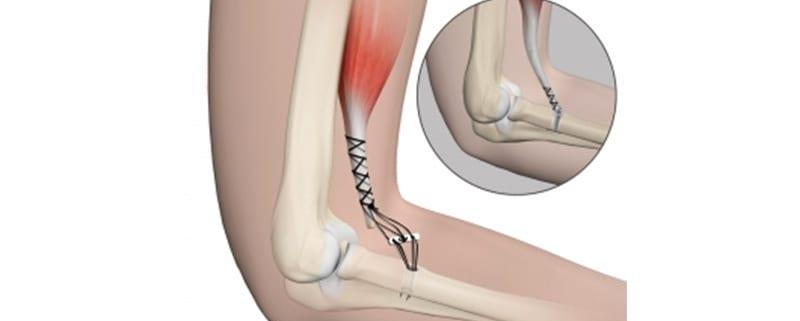
Distal Biceps Rupture
Overview
Distal Biceps Rupture is a condition that originates from an injury to the biceps muscle located at the front of your upper arm. The word ’distal’ refers to the area where the biceps connects to the forearm bone. A tear in this part of the biceps is commonly known as a distal biceps rupture. It affects mainly men who are between 30 and 60 years old. Although it represents only 3% of all biceps ruptures, it’s a painful condition that can significantly affect the strength and flexibility of your arm.
Types
Typically, a distal biceps rupture could either be partial or complete. A partial rupture implies that the tendon is not entirely ripped off from the bone it’s attached to, while a complete rupture indicates a total tear-off of the tendon from the bone. The severity of the rupture depends on the degree of the tear, which generally dictates the required treatment.
Causes
The leading cause of a distal biceps rupture is usually an unexpected load or stress on the arm. This could result from sudden lifting of heavy weights or a swift, forceful movement of the elbow. Ageing and previous arm injuries also contribute to the risk, as they may weaken the tendon that connects the biceps to the forearm.
Symptoms
People with distal biceps rupture usually experience sudden, sharp pain in the elbow. This pain may be followed by:
-
- Swelling in the front part of the elbow
-
- Visible bruising on the elbow and the forearm
-
- A bulge in the upper part of the biceps muscle
-
- A gap in the front of the elbow where the tendon tore
-
- Weakness in elbow flexion and supination (rotating the arm to show the palm upward)
Diagnosis
Diagnosis of a distal biceps rupture is typically through a physical examination done by a medical professional, who will check for any visible symptoms such as swelling or deformity in the biceps area. The doctor may also perform specific physical tests. For instance, your forearm’s strength could be tested when rotated against resistance. Imaging tests such as MRI and ultrasound can confirm the diagnosis and allow for a better understanding of the rupture’s severity.
Treatment Options
Treatment for a distal biceps rupture varies depending on the extent of the rupture and the patient’s lifestyle.
-
- Non-Surgical Treatment: This is best suited for partial ruptures or patients who wouldn’t be severely affected by loss of arm strength. It includes rest, physical therapy, and pain management through medication.
-
- Surgical Treatment: Recommended for those who have completely ruptured their biceps tendon and require full strength in their arm. The surgery re-attaches the tendon to the forearm bone using anchors.
Living With Distal Biceps Rupture
Living with a distal biceps rupture, especially as you recover, can be a challenge. Here are some tips:
-
- Take prescribed medications and follow through with physical therapy.
-
- Avoid heavy lifting and high-strength activities.
-
- Engage in exercises that help regain strength and motion in your arm.
When to Seek Help
If you experience severe and sudden pain in your elbow, particularly after a heavy lifting or an injury, it is crucial to seek immediate medical help. The same applies if you notice a noticeable bulge in your upper arm or elbow area. Timely medical attention can prevent further complications and ensure a higher chance of a successful recovery.
